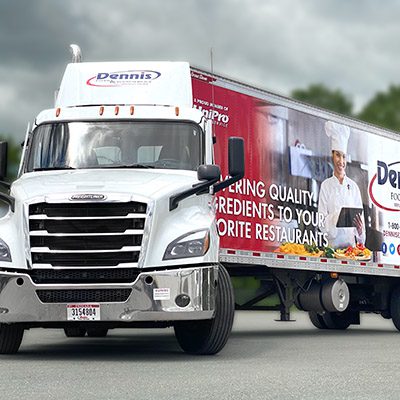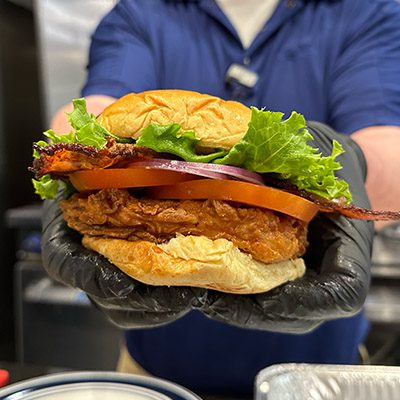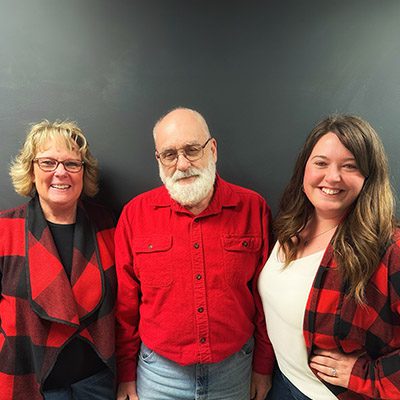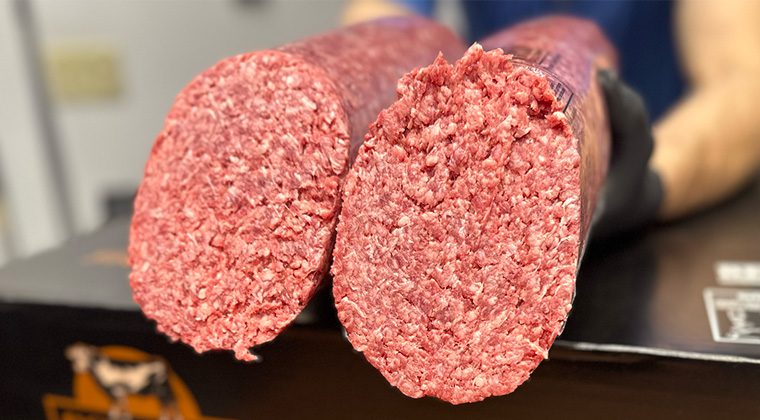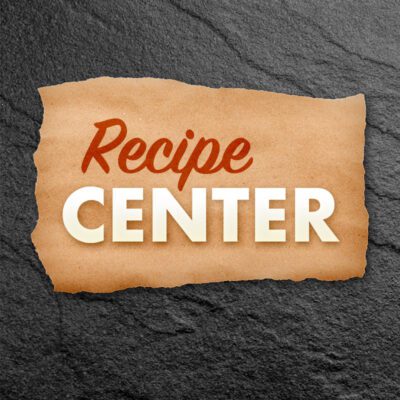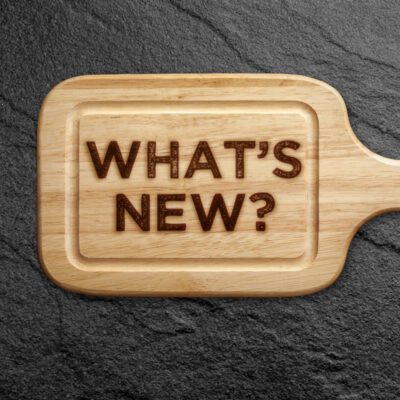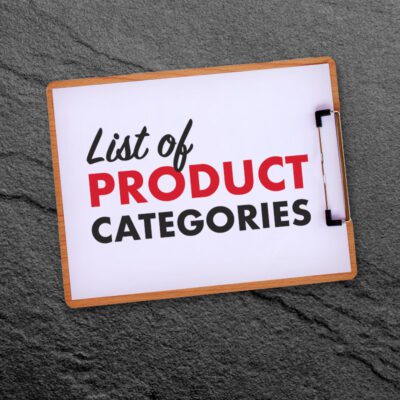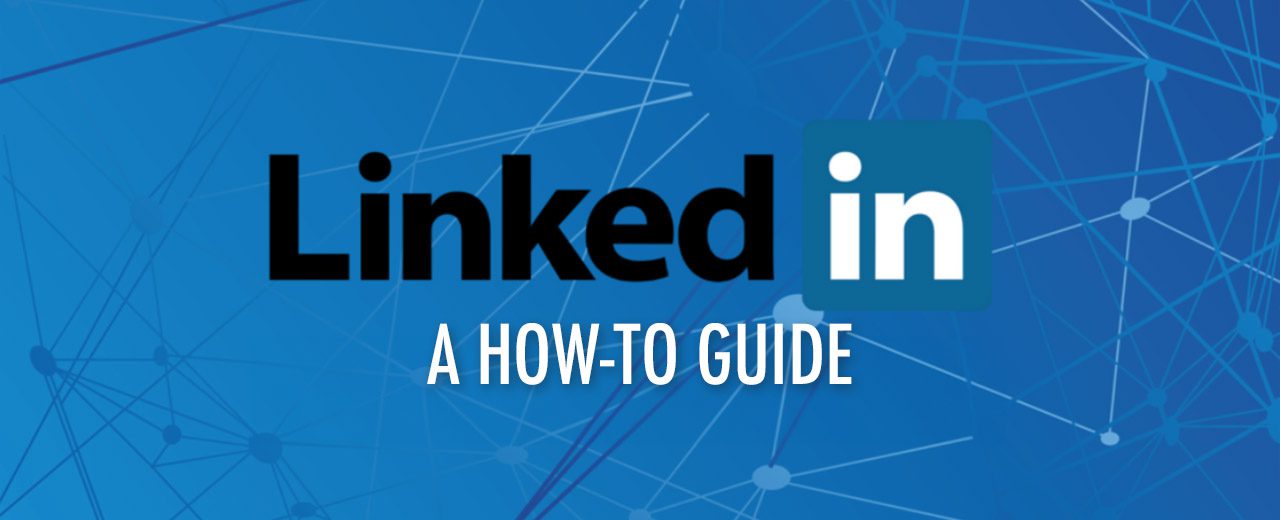
Using LinkedIn to Represent Yourself & Our Company
- How do I use LinkedIn to represent myself and my company?
- How do I continually reinforces a customer’s decision to partner with us or attracts new businesses to partner with us?
- How can I showcase our company culture, product offerings, and my capabilities as a food salesperson in such a way that it could lead to new relationships, new cases sold, additional product lines brought in, and overall increased sales?
Initial Considerations
Your Network
The next piece is who to find, connect with, and follow.
You’ll want to find and follow all the properties, and all possible individuals in the organization on LinkedIn. (Including waitstaff, cooks, etc. if they are on it) This increases the chances that you’ll be followed by someone in the business, and that your LinkedIn content will appear in their feeds.
You’ll also want to find relevant industry professionals, influencers, and brands–especially the brands we work with. This will keep you in the loop with the trending conversations, posts, and information from a wider network. One simple way to find people to follow is to look at your existing network, and see who your connections are following.
How To
Here are the basic steps for using LinkedIn to grow your business as an Account Executive:
- Optimize Your LinkedIn Profile:
- Create a professional and engaging profile that highlights your expertise, experience, and accomplishments as a food salesperson.
- Use a high-quality profile picture … We will be taking new headshots for everyone this fall. In the meantime,… if you want to take your own: Taking a LinkedIn Headshot – https://www.youtube.com/watch?v=hiDrmIgf4N8
- Use a compelling headline that showcases your role and value proposition. … Writing a LinkedIn headline – https://blog.hubspot.com/sales/how-to-write-an-effective-linkedin-headline
- Craft a well-written summary that communicates your passion for the industry, your achievements, and your goals.
- Share Valuable Content:
- Regularly post content that provides value to your target audience, such as industry insights, market trends, and success stories.
- Utilize a mix of text, images, and videos to keep your posts engaging and varied.
- Use hashtags relevant to your industry to increase the visibility of your posts.
- Engage with Your Network:
- Respond to comments and messages promptly to build a strong rapport with your connections.
- Engage with other people’s content by liking, commenting, and sharing valuable posts.
- Join LinkedIn groups related to your industry and actively participate in discussions.
Some relevant LinkedIn Groups to checkout:
-
-
- Food Industry Sales and Marketing Network Link: https://www.linkedin.com/groups/3919140/
- Food and Beverage Industry Sales and Marketing Link: https://www.linkedin.com/groups/4474765/
- Retail Sales Professionals (for food sales to retail establishments) Link: https://www.linkedin.com/groups/1817638/
- Foodservice Sales and Marketing Network Link: https://www.linkedin.com/groups/1986991/
- Food and Beverage Professionals Worldwide Link: https://www.linkedin.com/groups/3890018/
- CPG Sales & Marketing Professionals Link: https://www.linkedin.com/groups/4824243/
- Food Manufacturing, Processing & Safety Professionals Link: https://www.linkedin.com/groups/1832267/
- The Food Business Forum Link: https://www.linkedin.com/groups/3500491/
- FMCG Sales & Marketing Professionals Link: https://www.linkedin.com/groups/3833228/
- Food Industry Professionals Worldwide Link: https://www.linkedin.com/groups/2017037/
-
- Showcase Company Culture and Product Offerings:
- Share behind-the-scenes glimpses of your company culture, events, and team members to humanize your brand.
- Selfies at sales meetings, with vendors, on the road, eating/enjoying food
- Highlight your product offerings through informative posts, product demonstrations, and customer testimonials.
- Follow our brands and comment, reshare, use what’s there… same for the Dennis website (and our social) turn our content into your own posts.
Examples
Below are examples of how you can accomplish the above goals:
- Behind-the-Scenes Glimpses:
- Share photos or short videos of team members working together during sales meetings or brainstorming sessions.
- Post pictures or clips from company events, trade shows, or product launches to demonstrate your team’s passion and dedication.
- Offer a virtual tour of your office or production facilities to provide an inside look at your company’s operations.
- Selfies and Engaging Content:
- Post selfies with vendors, customers, or colleagues while sharing exciting anecdotes or success stories from your interactions.
- Share personal experiences on the road, discovering new food trends, or visiting potential clients, adding a human touch to your sales journey.
- Highlighting Product Offerings:
- Create informative posts about your product lines, including their unique features, benefits, and applications.
- Share high-quality images or videos showcasing your products in action or appealing food presentations.
- Product Demonstrations:
- Develop short video demos showcasing the preparation process or different ways your products can be used.
- Create engaging carousel posts highlighting the versatility and value of your products.
- Customer Testimonials:
- Share written or video testimonials from satisfied customers, highlighting their positive experiences with your products and services.
- Encourage customers to post their reviews on your LinkedIn page, and engage with them by responding to comments.
- Engage Your Audience:
- Ask questions in your posts to encourage interaction and gather feedback from your audience about their preferences or needs.
- Respond to comments and messages promptly, building stronger connections with potential customers and partners.
Remember to maintain a balance between promotional content and engaging, value-driven posts. By showcasing your company culture, humanizing your brand, and highlighting your product offerings, you can attract potential partners and customers while establishing yourself as a credible and personable food sales professional on LinkedIn.
- Build Thought Leadership:
- Publish long-form articles on LinkedIn’s publishing platform to showcase your expertise and establish yourself as a thought leader in the food sales industry.
- Share relevant industry news and insights to position yourself as a knowledgeable and reliable resource.
Remember, building a strong LinkedIn presence takes time and consistency. By implementing these strategies you can increase your leads, attract new businesses, and reinforce your reputation as a food sales expert while showcasing your company culture and product offerings.
Experience
Drawing on your years of experience, you can leverage your expertise to create compelling content that supports your efforts to grow existing customers and attract new accounts.
Here’s a list of ways you could use your experience to create engaging content:
- COOK it bro!
BE THAT FOODIE, show the personal passion, show that this is more than a job to you, #foodislife…- Create, cook, and share delicious food. Preferably using the products your customers are selling, or similar to what they use, showcasing your relevant knowledge and creativity in the kitchen.
- Don’t make it a hard sell.. You don’t need to say “try this recipe” or “buy this item” … Simply… “Check out this awesome ___ I made”…. “Oh. Man. This turned out delicious!” …. “I love working with _____ it’s so ______!”
- Cooking Tips and Techniques
- Offer cooking tips and techniques that highlight the unique qualities of the products they sell, providing valuable insights for customers.
- Share tricks and hacks for enhancing flavors and presenting dishes attractively.
- Don’t struggled to search for ideas of what to share (that’s everyone’s number 1 problem) just address the day…
- What’s the best advice for the season, for the weather, for the event, for the trends, etc.
- If you’re interested in it, it’s going to be engaging… steer clear of anything that you’re not interested in, as it will feel forced.
- Culinary Trends and Insights
- Write blog posts or create videos discussing the latest culinary trends, showcasing your awareness of industry developments.
- Share insights on how these trends relate to the products you offer, helping customers stay ahead in the food business.
- Pairing Suggestions
- Recommend food and beverage pairings, demonstrating how their products complement various dishes to enhance the overall dining experience.
- Provide suggestions for creating thematic menus or special food events for their potential customers.
Be that foodie – Do this while you’re dining out, stand the camera up against the napkin holder or hand it to whomever you’re with… “I just ordered a _____ and I love that it has ______ it makes we want to try doing ______.”
- Customer Success Stories
- Feature success stories and testimonials from (anonymous if needed) customers who have used our products or your ideas/strategies to elevate their culinary offerings or improve their business.
- Showcase how our products have contributed to the growth and success of various restaurants or food businesses.
- Product Comparisons
- Conduct comparative analyses of one products against others, explaining the unique selling points that set their products apart.
- Use data and customer feedback to support their claims and build trust with potential clients.
- Seasonal and Holiday Promotions
- Share ideas for seasonal menus or holiday-themed recipes that incorporate their products, encouraging customers to consider them for special occasions.
- Offer limited-time promotions or discounts to attract new accounts during peak seasons.
- Draw from your past experience and turn it into a story.
- Health and Nutrition Benefits
- Educate customers on the health and nutrition benefits of their food products, appealing to health-conscious consumers.
- Create content that highlights the nutritional value of their products compared to alternatives in the market.
- Culinary Events and Demos
- Organize live cooking demos or webinars where they showcase our products’ versatility and demonstrate how to use them in various dishes.
- Collaborate with chefs or food influencers to reach a broader audience and increase credibility.
- Interactive Q&A Sessions
- Host interactive Q&A sessions or “Ask the Expert” events on social media platforms to engage with potential customers and address their questions/business concerns.
- Use these sessions to showcase your deep culinary knowledge and passion for foodservice.
Foodie Culture
Leveraging your experience as a “foodie” can create valuable and relevant content opportunities that resonates with customers, strengthens your credibility, and attracts new accounts to do business with you.
This approach showcases your expertise, builds trust, and positions you as a go-to resource. In addition to the foodie/culinary side, you can showcase your business/financial expertise in the foodservice world.
Here are some topics…
- Conduct Menu Analysis: Review the restaurant’s current menu to identify opportunities for improvement, such as removing low-margin items, optimizing food cost, and highlighting high-profit dishes.
- Offer Menu Engineering: Suggest strategic placement of menu items and pricing adjustments to increase profitability and promote high-margin dishes.
- Provide Ingredient Sourcing: Assist in finding cost-effective and high-quality ingredients to maintain food quality while reducing overall costs.
- Introduce New Products: Introduce innovative and trending food products that align with the restaurant’s theme and target audience, driving interest and potential sales.
- Recommend Seasonal Specials: Propose seasonal menu items that capitalize on fresh and readily available ingredients, attracting customers with limited-time offerings.
- Competitive Analysis: Analyze competitors’ menus and pricing strategies to help the restaurant position itself competitively while maintaining profitability.
- Calculate Food Costs: Accurately calculate food costs for each menu item to ensure pricing aligns with desired profit margins.
- Optimize Inventory Management: Implement effective inventory management practices to minimize waste, control costs, and optimize stock levels.
- Train Staff on Upselling: Provide training to restaurant staff on upselling techniques to increase average check value and boost revenue.
- Offer Promotions and Bundles: Recommend promotional offers, combo meals, or loyalty programs to encourage repeat business and enhance overall profitability.
- Monitor Sales Performance: Track the performance of menu items and identify best-selling dishes to capitalize on customer preferences.
- Collaborate on Special Events: Collaborate with the restaurant on themed events or chef collaborations to attract new customers and increase revenue.
- Identify Cross-Selling Opportunities: Identify opportunities for cross-selling and upselling between food and beverage options to boost overall sales.
- Implement Cost Control Measures: Help implement cost control measures, such as portion control and waste reduction strategies, to improve profitability.
- Analyze Profitability Metrics: Provide insights on key profitability metrics like food cost percentage, gross profit margin, and contribution margin to monitor the restaurant’s financial health.
By showcasing your expertise in these areas you can demonstrate your capability to help a restaurant enhance its menus, control food costs, improve profit margins, and ultimately drive greater profitability.
ChatGPT
I’m sure you’ve already come up with some ideas for your next (or first) LinkedIn post, but if you’re stuck, or having trouble figuring out how to turn the idea into content. Sign up for and use chatGPT…
Below are screen shots of questions I posed to ChatGPT, along with it’s response and returned requests:
“Topics for Posts”
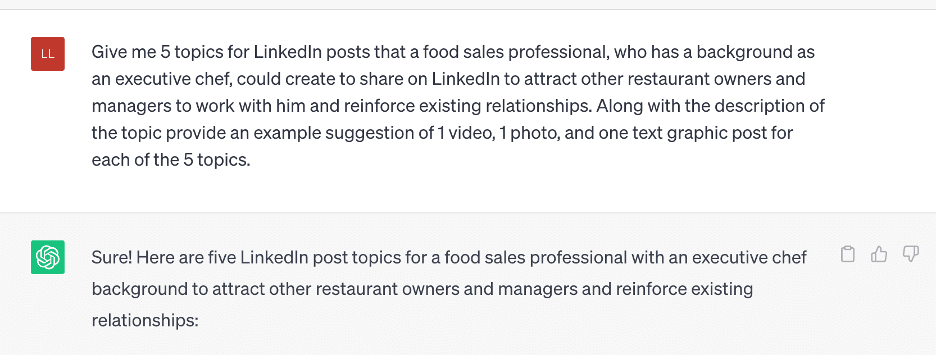
- Topic: “Elevating Your Menu: Creative Ways to Incorporate Specialty Ingredients” Description: Share innovative ideas on how restaurant owners can incorporate unique specialty ingredients into their menus to attract customers and enhance the dining experience.
Example Content Suggestions:
- Video: A short video demonstrating how to create a signature dish using the food sales professional’s specialty ingredient.
- Photo: A visually appealing image of a beautifully plated dish featuring the specialty ingredient.
- Text Graphic: A visually engaging infographic showcasing different ways the ingredient can be used in various dishes.
- Topic: “Menu Diversification: Expanding Your Offerings with New Food Trends” Description: Discuss emerging food trends and offer insights on how restaurant owners can diversify their menus to cater to evolving customer preferences.
Example Content Suggestions:
- Video: A video highlighting the process of creating and presenting a trendy dish that aligns with the latest food trend.
- Photo: A series of photos showcasing a variety of trendy dishes that can be added to the menu.
- Text Graphic: An attention-grabbing graphic listing the top food trends of the year, along with brief descriptions of each.
- Topic: “Creating Unforgettable Culinary Experiences: Hosting Special Food Events” Description: Advise restaurant owners on how to host special food events, such as themed dinners, chef collaborations, or tasting menus, to attract new customers and boost sales.
Example Content Suggestions:
- Video: A behind-the-scenes video of the food sales professional helping to organize and execute a successful special food event.
- Photo: A collage of images from a past food event, showcasing happy diners and unique dishes.
- Text Graphic: A visually appealing graphic announcing an upcoming food event with details on the date, theme, and special offers.
- Topic: “The Art of Food Presentation: Enhancing Visual Appeal” Description: Offer tips and techniques on how restaurant owners can elevate their food presentation to create visually enticing dishes that leave a lasting impression on customers.
Example Content Suggestions:
- Video: A tutorial video on plating techniques and garnishes to make dishes look more visually appealing.
- Photo: A side-by-side comparison of a dish with basic presentation and the same dish with enhanced plating.
- Text Graphic: A step-by-step infographic highlighting easy-to-implement food presentation tips.
- Topic: “Supporting Local: Showcasing Community Partnerships and Sustainable Sourcing” Description: Highlight the food sales professional’s commitment to supporting local businesses and sustainable sourcing practices, encouraging restaurant owners to join in on these efforts.
Example Content Suggestions:
- Video: A video interview with a local farmer or supplier, discussing the importance of sustainable sourcing and community partnerships.
- Photo: An image of a dish prepared with locally sourced ingredients, with a brief caption acknowledging the local supplier.
- Text Graphic: A visually appealing graphic showcasing the benefits of supporting local businesses and sustainable sourcing practices.
These LinkedIn posts demonstrate the food sales professional’s culinary expertise, highlight their specialty ingredients and products, and showcase their commitment to enhancing the dining experience and supporting sustainable practices. By sharing valuable and visually appealing content, they can attract restaurant owners and managers, strengthen existing relationships, and position themselves as valuable partners in the food industry.
“Questions for a Poll”
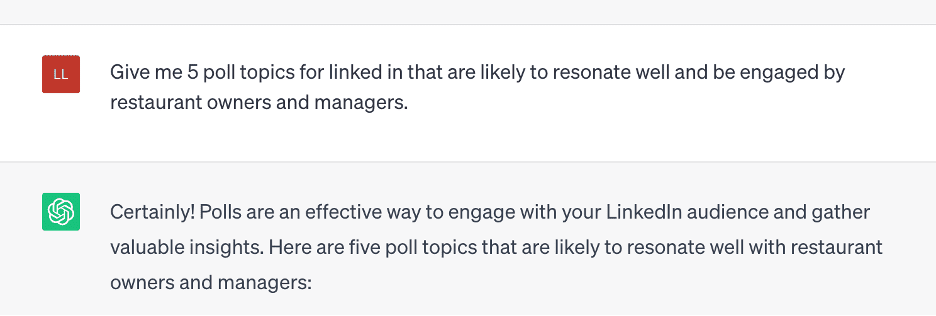
- Poll Topic: “What’s the Biggest Challenge Your Restaurant Faces in Post-Pandemic Recovery?”
- Options: a) Staffing Shortages, b) Supply Chain Disruptions, c) Shifting Consumer Preferences, d) Marketing and Promotions, e) Other (Please Specify)
- Poll Topic: “Which Type of Promotions Drive the Most Foot Traffic to Your Restaurant?”
- Options: a) Discounts and Coupons, b) Limited-Time Offers, c) Loyalty Programs, d) Special Events, e) Other (Please Specify)
- Poll Topic: “What Trending Cuisine or Food Item Are You Most Excited to Incorporate into Your Menu?”
- Options: a) Plant-Based Dishes, b) Global Fusion Cuisine, c) Craft Beverages, d) Artisanal Desserts, e) Other (Please Specify)
- Poll Topic: “How Often Do You Update Your Menu to Keep It Fresh and Exciting?”
- Options: a) Monthly, b) Quarterly, c) Bi-Annually, d) Annually, e) Rarely (We Stick to Classics)
- Poll Topic: “What Factors Influence Your Decision When Choosing Food Suppliers?”
- Options: a) Price Competitiveness, b) Product Quality and Freshness, c) Reliable Delivery and Timeliness, d) Sustainability and Ethical Sourcing, e) Other (Please Specify)
These poll topics are designed to spark interest and discussions among restaurant owners and managers, allowing them to share their experiences and opinions. By engaging your LinkedIn audience with relevant and timely poll questions, you can gain valuable insights into their challenges, preferences, and decision-making processes, while also encouraging active participation and fostering a sense of community among your connections.
“Turning the Response Into a New Post”
Then, for example – using any one of the poll topics, you make another post and address the popular response, or even the least popular response, and you get a whole ‘nother post out of it further showcasing your thoughtful expertise.
Let’s go with the first Poll question, and assume that the #1 issue was labor… We know that you want to sell products to them… so….

- Pre-Cut and Pre-Packaged Ingredients: Opt for pre-cut and pre-packaged ingredients, such as pre-chopped vegetables or pre-portioned proteins. This reduces the time and labor required for food preparation.
- High-Quality Convenience Products: Choose high-quality convenience products, like pre-made sauces or dressings, that require minimal preparation but still offer excellent taste and quality.
- Discover your suppliers specialty lines: Pre-prepared items, such as pre-marinated meats or pre-seasoned ingredients, to streamline kitchen preparation and cooking.
- Streamlined Menu Offerings: Focus on a streamlined menu with dishes that share common ingredients, simplifying inventory management and reducing the number of food items that need to be stocked.
- Batch Cooking: Design a menu that allows for batch cooking, where larger quantities of certain dishes are prepared in advance and held for service. This reduces wait times for customers during busy periods.
You’d just take whatever bits of this you like and turn it into a video, a post, etc in your own words.
Selfie Videos
The EASIEST and MOST engaging content you can make is a selfie video…
And you have ample settings to do it. In the car. At a restaurant table. Walking down the sidewalk. Sitting on the bumper of a Dennis truck. In some scenic outdoor setting, etc.
Get a $20 tripod for your phone and talk to the camera. 10-20 seconds is all it takes. You’ll get longer and better as you do it. Everyone start somewhere. Don’t let your awkward first attempts dissuade you. JUST DO IT, bury the old with the new, growth will come. Business will come!
Platforms aside. Download CapCut. Start talking to your phone, recoding video, ALL THE TIME, piece it together in CapCut and see what you get. DO NOT JUDGE YOURSELF too critically. Of the 100 people our there right now that could create content to grow their businesses, 99 of them won’t because excuses…. So, those 99 people are envious of the 1 that does. Be the 1 that does.
Download the CapCut App
Android: https://play.google.com/store/apps/details?id=com.lemon.lvoverseas
iOS: https://apps.apple.com/us/app/capcut-video-editor/id1500855883
References:
Gary Vaynerchuk’s LinkedIn Profile Tips: https://www.garyvaynerchuk.com/the-best-tips-for-linkedin-profile-success/
Gary Vaynerchuk’s Content Strategy for LinkedIn: https://www.garyvaynerchuk.com/64-content-strategies/
HubSpot’s “The Power of Behind-the-Scenes Content” https://blog.hubspot.com/marketing/behind-the-scenes-content
Social Media Examiner’s “How to Take and Edit Smartphone Photos Like a Pro” https://www.socialmediaexaminer.com/smartphone-photography-tips-pro/
Buffer’s “The Ultimate Guide to Creating Visually Appealing Content” https://buffer.com/resources/visually-appealing-content/
Sprout Social’s “How to Create Engaging Video Content for Social Media” https://sproutsocial.com/insights/social-media-video/
Neil Patel’s “How to Use Testimonials to Drive Leads and Sales” https://neilpatel.com/blog/drive-leads-and-sales/
Reference: LinkedIn’s “10 Tips for More Engaging Content on LinkedIn” https://www.linkedin.com/business/enterprise/marketing-solutions/blog/posts/content-marketing/2018/10-tips-for-more-engaging-content-on-linkedin
Gary Vaynerchuk’s Tips on Storytelling and Company Culture: https://www.garyvaynerchuk.com/how-to-tell-a-story-on-social-media/
Reference: Gary Vaynerchuk’s Thoughts on Building Thought Leadership: https://www.garyvaynerchuk.com/thought-leadership-for-businesses/
